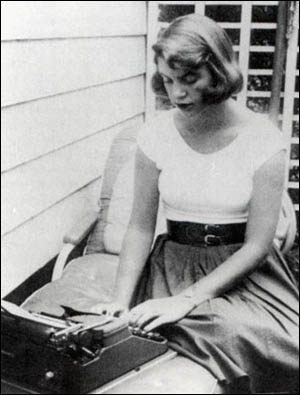 Angående sorg, Sylvia Plath och Förintelsen:
Angående sorg, Sylvia Plath och Förintelsen:"If the comparison of mourning processes can be complex and multi-layered, what about those instances where the very possibility of comparison seems to be ruled out? The most evident - and perhaps the only - example of such a barrier in our culture is the Holocaust. When Sylvia Plath dared to use images of the Holocaust in her poem 'Daddy' to dramatize personal, autobiographical threads, the response was outrage and anger. If we take seriously the argument about the resonance between mournings, this produces a number of problems: in particular, the seal of prohibition on comparison that marks representions of the Holocaust prevents the pattern of mourning we have discussed from taking place. On a clinical level, this is a crucial point. Think of all those cases where a loss in a family has not been mourned. What consequences will this have, we can ask, on the children? How can they mourn if they are deprived of the very possibility of a dialogue of mournings?" (p. 80)
Inga kommentarer:
Skicka en kommentar